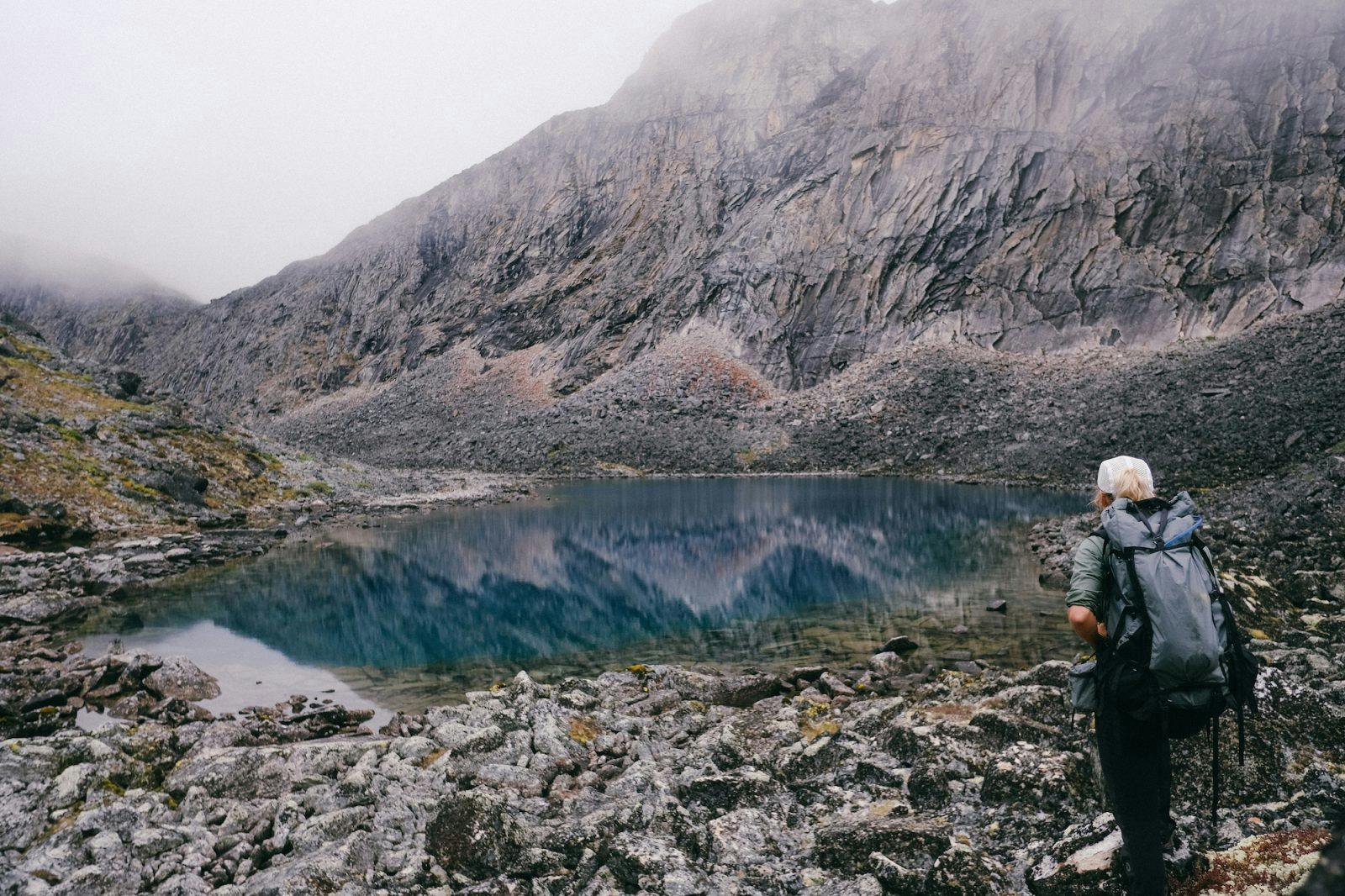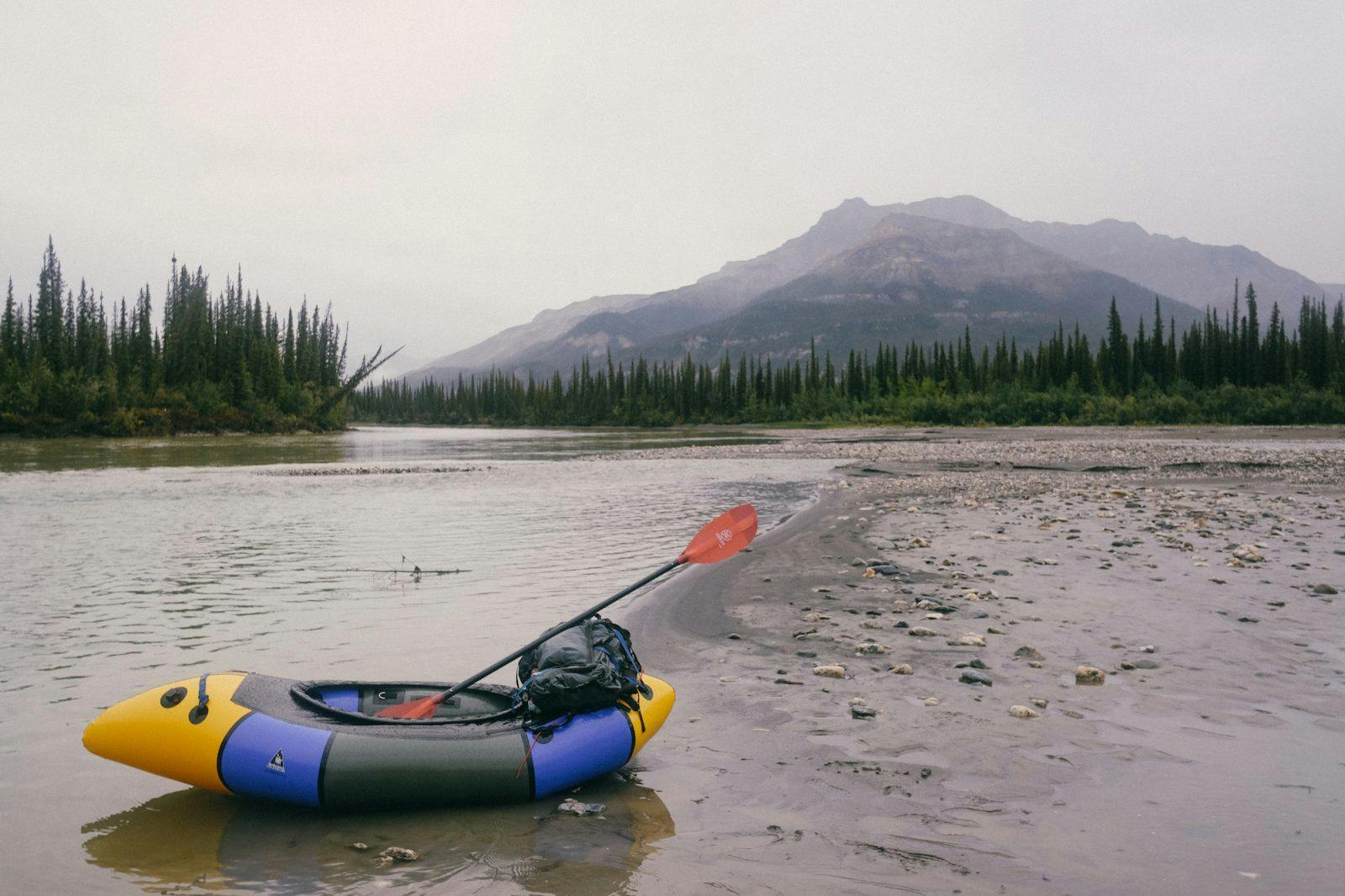Lessons in Flexibility: Learning to Slow Down in Alaska's Brooks Range
An Expedition to the Arctic Refuge Derailed by Bad Weather Reminds Cairn Project Ambassador Emily Sullivan the Benefits of Slowing Down
Photos and text by Emily Sullivan.
“Flexibility is key in the Arctic.”
Bush pilots Dirk and Danielle of Coyote Air, from Coldfoot, Alaska, say flexibility is key in this icy landscape. It certainly speaks to my experience while planning a trip in the far north this summer. I had mapped a 130-mile traverse of the central section of the Arctic Refuge, to be completed in one week. The route involved four days of hiking and three days of floating, and as the trip approached, I was anxious and excited for the challenges I would face.

However, upon arrival to Coldfoot, I quickly found that my plans would be thwarted by unusually heavy rains in the Brooks Range. Not only could we not fly east for multiple days, the rivers in that direction were raging and unsafe for a solo float. In the spirit of flexibility, I chose to delay my trip, hoping that flooding would subside.
Two weeks later, rivers had not gone down; in fact, they continued to rise. Dirk and Danielle offered to fly me west into Gates of the Arctic instead, as they already had other hikers to pick up in the Arrigetch Peaks area. Weather was better out west, and the Alatna river was high but safe. I struggled with the abandonment of my original plan: while I yearned to be easy and flexible, I felt disappointed. It can be hard, at times, to remember how small we are as humans and how insignificant our plans are against forces of nature.
I knew that I was lucky to have the option to rearrange my trip, and very lucky that the flooding didn’t begin when I was already out in the Refuge alone. Still, I had been excited for the physical and navigational challenges of my original trip, as I would be traveling at a rapid pace through a trail-less area that sees very little visitation. The Arrigetch Peaks region didn’t quite allow me those challenges–it is a somewhat contained and commonly visited area for the region. A traverse could have been possible with more time or with partners, but I had only myself and only one week. So I let go of some of my personal expectations and tried to force myself to do two things I am not particularly good at: slow down and go with the flow.

When the drone of Dirk’s plane finally faded into the clouds and left me in silence on the banks of the Alatna, I was immediately struck by how much time I had on my hands. I was fully and completely alone. I no longer had a mileage goal, and I had no epic route to complete in a certain amount of time. Instead, I had six days to spend however I pleased; a fact that at first felt more cumbersome than freeing.
As days passed, I settled into myself, observing the change of seasons in the far north and slowing down to a degree that I had forgotten was possible. I meditated next to the most brilliant blue tarn I have ever laid eyes on, with granite spires towering above. I sat under a tarp in the rain and wind high on an alpine ridge, waiting out the weather, reading the words of an eastern philosopher, and laughing at the absurdity of my situation.
I danced, alone–a ragged version of a ballet in the clouds. I let a lazy river choose my pace as I counted the raindrops merging with its surface. I spoke with birds and rocks and swayed with arctic poppies in the breeze. I wasn’t alone, as every little piece of the landscape became my friend.
It occurred to me mid-trip, as I sat amid yellow-green marsh grasses, admiring their ability to bend with the breeze: perhaps being slow with the land is more important than I remembered. See, in recent years I have developed a bit of a fast-and-light mentality, pushing myself to go further faster in hopes of seeing as much as I possibly can. But as many of us move through the landscape with adrenaline and speed, do we forget to connect with the rocks and the birds and the blades of grass?

My mind jumped to Mardy Murie, the grandmother of conservation and the original inspiration for my trip to the Arctic Refuge. She certainly wasn’t traveling fast and light over various passes day in and day out, covering 130 miles in a week. She and Olaus were base campers, staying in place while observing the land and its resident beings.
Slowing down was cathartic. It was hard and lonely at first, but it eventually allowed me a new feeling of freedom. I experienced a contentment that was foreign but familiar–it permeated my being and made me smile. I soaked in the surrounding beauty until I felt so saturated I might burst. The quiet reminded of the reasons I originally became enamored with the outdoors and the far north. I spent time thinking, looking, listening, and appreciating the minutiae of the land.
My time among the peaks was slow, warm, and filled with beauty. My time on the river allowed me a different type of freedom as I moved effortlessly through the landscape. The Alatna was calm and lazy and posed no threat to me as a solo boater as it allowed me a change of scenery. I paddled to stay warm when cold rain stung my face and fingers, or I sat in silence as it let up, watching mountains grow and shrink as I drifted around bend after bend.
I camped for two nights at the confluence of the Alatna and Nahtuk Creek, drying gear and exploring my new surroundings. My bush pilot, Danielle, confided to me that this area was, to her, “the real Brooks Range.” It held a subtle beauty, less dramatic than the Arrigetch, but more similar to the quiet and humble peaks I am used to at home in the foothills of the Alaska Range. I felt a connection to this place, and as my trip wound down, my heart was torn by the simultaneous desire to stay forever and the desire to be amongst humans again.

I still plan on returning to the Arctic Refuge to complete some version of my original trip, and I’m sure that I will still move fast and light on many of my backcountry trips. But for now, I am thankful for the reminder of how small I am, how insignificant my plans are. The reminder that farther and faster aren’t synonymous with better. The reminder that I still have an innate need to slow down and breathe; to take time to appreciate the beauty that I choose to immerse myself in; to remain flexible and optimistic, no matter how much a plan may be forced to change.
This trip was a fundraiser for The Cairn Project, which is committed to getting teen and pre-teen girls into the outdoors through grants nationwide. The fundraiser was met with great success: in three weeks, donors raised ,000 towards The Cairn Project’s charitable programs! I’d like to extend a big thank you to all of my sponsors and supporters who made the trip possible. The companies who generously supported this trip are Alpacka Raft, Seek Outside, Werner Paddles, Kokatat USA, and Denali Mountain Works. Also, a huge thank you to Dirk and Danielle of Coyote Air–their kindness and flexibility will not be forgotten!

